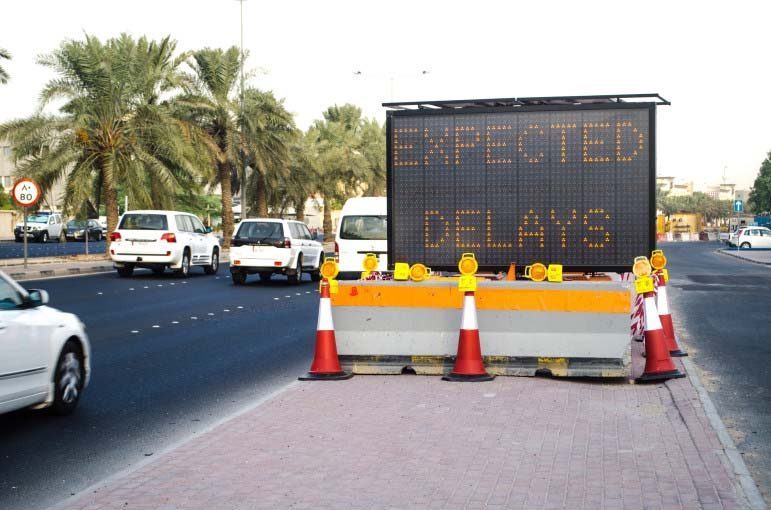
Amid ongoing efforts to add more capacity to Doha’s overburdened road network, Qatar’s public works authority, Ashghal, is preparing to widen E-Ring Road and Najma Street in the Old Airport area.
Earlier this week, Ashghal announced it was opening the bidding process for the project and published a summary of its plans.
The tender contain good news for motorists who often use the arterial street: While traffic will have to be diverted, construction crews are not allowed to reduce the overall number of lanes while they work.
The scope of the project, which runs along the borders of the Old Airport, Nuaija and Al Thumama areas, includes:
- Constructing a signalized intersection where Najma and Al Hadara streets meet, roughly half a kilometer south of E-Ring Road. Short stretches of Najma and Al Hadara will be widened and realigned to accommodate the new intersection;
- Converting the roundabout at E-Ring Road and Najma Street (Al Thumama junction) to a signalized intersection;
- Creating a signalized intersection where Najma Street meets Al Oqba Bin Nafie Street, roughly half a kilometer north of E-Ring Road;
- Realigning and widening 2.3km of Najma Street;
- Upgrading the existing signalized intersection at Al Matar Street (Airport Road) and E-Ring Road, next to the old Doha International Airport property, to allow vehicles to make U-turns;
- Realigning and widening 3.3km of E-Ring Road; and
- Constructing a pedestrian bridge over E-Ring Road, although this item is marked as “provisional.” No location is specified.
Bidding on the project closes on Dec. 16. The successful construction company will have 18 months to complete the project once work commences.
F-Ring work
The initiative comes two months after work crews completed another major transportation project in the area, removing a diversion near the Airport Petrol Station as part of the ongoing construction of the $837 million F-Ring Road.
Ashghal recently said in its annual report that it intends to initiate 14 major road projects in 2015, including work on Al Bustan, Al Jamiaa and Al Markhiya streets, among others. That’s in addition to 11 expressway projects that are already underway.
Earlier this week, a government official warned motorists that they’re likely to face traffic snarls for the foreseeable future.
“Commuters are going to be inconvenienced and traffic jams are here to stay for the next three to four years,” the Qatar Tribune quoted Abdul Ghaffar Chaudhry, a surface transport advisor at the Ministry of Transport, as saying. “The congestion is expected to continue due to the development projects underway in the city and upcoming projects.”
In a separate tender published this week, Ashghal said it is looking for a company to take over the operation and maintenance of its CCTV camera and traffic signal systems.
Authorities use the cameras to monitor traffic flows and adjust the length of green lights to better distribute vehicle volume across the road network.
Thoughts?